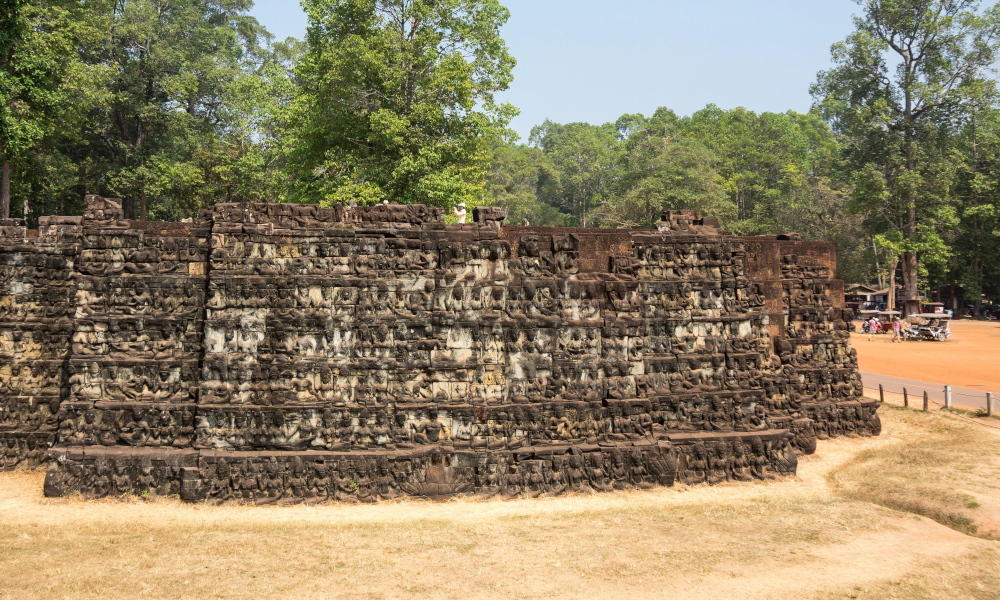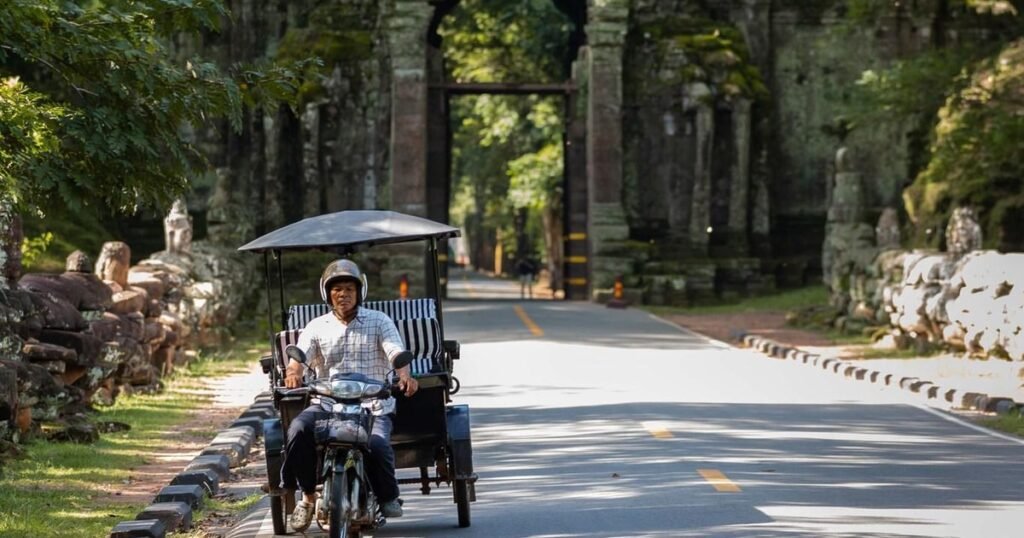Terrace of The Leper King

The Terrace of the Leper King, situated adjacent to the Terrace of the Elephants, ranks among the most frequented locations within the Angkor Archaeological Park.
Table of Contents
ToggleThe peculiar designation is derived from a statue dating back to the 15th century that was unearthed at the site. This statue, representing the Hindu deity Yama, was entirely enveloped in moss, leading local inhabitants to believe it bore a resemblance to an individual afflicted with leprosy.
This terrace, constructed in the 12th century, is believed to have served as a cremation site for members of the royal family.
Experience a private Tuktuk tour of Angkor Wat and its neighboring temples. Discover the grandeur of Angkor Thom, Ta Keo, Banteay Kdei, and additional locations...
Layout and Design
The edifice was constructed in a “U” shape, which is thought to symbolize Mount Meru, the abode of the deities in Hindu tradition.
The terrace measures 25 meters in length and is entirely adorned with intricate carvings, predominantly featuring female celestial figures, garudas, and naga serpents.
There are both inner and outer walls. The inner walls were erected first and subsequently buried when the outer walls were constructed. The inner walls showcase well-preserved carvings, while the outer walls illustrate scenes of Shiva and a sword swallower.
Atop the terrace is the location where the “Leper King” statue was discovered. Currently, a replica of the statue is displayed, as the original is kept in a secure location for preservation.
History of Terrace of the Leper King
Limited information exists regarding the purpose and history of this terrace. It is established that it was constructed in the late 12th century under the reign of King Jayavarman VII. There is a prevailing belief that it served as a royal cremation site, although this assertion remains unverified.
Subsequent modifications were made to the terrace over time. Initially, it was designed as a Buddhist edifice; however, in the 15th century, a statue of Yama, the Hindu god associated with death, was incorporated into the structure.
The terrace’s name is thought to be derived from this statue, which was discovered entirely enveloped in moss. Local inhabitants believed it bore a resemblance to an individual afflicted with leprosy. Additionally, there is a legend concerning King Yasovarman I, who is said to have suffered from the same ailment.
Why Visit Terrace of the Leper King
The Terrace of the Leper King is a highly frequented destination within Angkor Park, primarily due to its strategic location at the central junction that directs visitors either eastward or northward. If you choose to travel east, you are likely to embark on the small circuit tour. Conversely, if your route leads north, you will most likely be engaging in the grand circuit. Regardless of your chosen path, this notable site will be encountered along the way.
Location & How to Get There
The Terrace of the Leper King is situated within the Royal Square of the ancient city of Angkor Thom, approximately 600 meters to the north of the Bayon temple. Nearby temples include Phimeanakas, Baphuon, Suor Prat Tower, North Khleang, Tep Pranam, and the Preah Pithu Group.
Most visitors typically access Angkor Thom through the South Gate after they visit Angkor Wat. If you proceed northward from this point, you will first encounter the Terrace of the Elephants on your left. Continuing further north will lead you to the Terrace of the Leper King.
For those entering through the Victory Gate on the eastern side of Angkor Thom, it is advisable to follow Victory Way straight ahead. Upon reaching the end, the Elephant Terrace will be directly in front of you. A right turn will then place the Terrace of the Leper King on your left. If entering from the North Gate, travel south for approximately 500 meters, and you will find it on your right.

